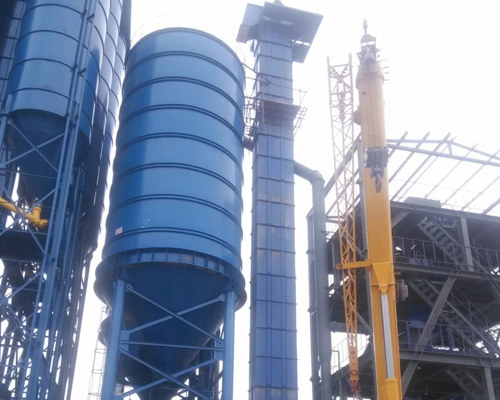The
chain bucket elevator is one of the most common conveyors. It is simple in structure and can carry bulk material vertically. In this paper, according to the characteristics of the bucket machine and the using environment, causes of the common faults of bucket machine were analyzed, and put forward the effective solution, for the bucket elevator provides a theoretical basis for design and use.
1.Seriously material return in head of bucket elevator
There are many reasons for the material return in the head of
chain bucket elevator. For example:1. the design of bucket structure is unreasonable, material can not unload. 2. The rotation speed in head of bucket elevator is low. 3. The height of head discharge is not enough. 4. The distance of clearance between discharge plate and hopper is too long. Solutions: The elevator structure is optimized to make the dustbin full of material. Properly increasing the rotating speed of the bucket elevator to ensure the smooth discharge of materials. Adjusting the height of the hopper head to made the trajectory of the hopper head conform to the discharge hole. The gap between the discharge lip plate and the hopper can be reduced so that the material can cross the gap and enter the outlet smoothly.
2.The fault of driving motor
The main reason for the failure of the driving motor is that the temperature is too high. In a result, the motor be burned. The reason why the motor temperature is too high is that the small electric machine design power. Some parts of the bucket elevator are stuck and cause stuck machine. Aiming at the problem of small power in motor design, the driving power is obtained through calculation, and the motor is selected by enlarging 1 or 2 levels. Meanwhile, according to the empirical formula, the driving power of the motor is calculated to determine whether it is reasonable. The formula is as follows
P = 1.2QH/367NM
Where
P refers to calculate the power of the
chain bucket elevator, KW
Q refers to the lifting capacity, t/h.
H refers to the lifting height, m
N refers to the transmission efficiency, Normally it is 0.9.
M refers to the power coefficient, normally the range of M is 0.4~0.6.
When H is less than 20 m, m is equal to 0.4. When 20 m < H ≦30 m, m is equal to 0.5; When H > 30 m, m is equal to 0.6.
Some parts of the bucket elevator are stuck and cause stuck machine. Great attention must be paid to the installation and testing of the bucket elevator. Once the machine is stopped, the power should be cut off immediately, the reason should be found out, the system should be adjusted in time, and the machine should be started again after the fault is cleared. At the same time, the hydraulic couple should be used as much as possible for the bucket elevator with a driving power of more than 30 kW, because the hydraulic couple has the function of overload protection, which can prevent the instantaneous overload from burning out the motor, so as to ensure the normal operation of the bucket elevator.
3.Head mandrel fractured
The head of the
chain bucket elevator is an important part of the whole machine, its head drum bears the traction chain or traction belt, and the dustbin and the whole weight of the material, so the head drum mandrel is easily broken. Head mandrel fracture reasons are as follows:1. head mandrel strength is not enough, mainly without heat treatment or heat treatment did not meet the requirements. 2. The head mandrel material is not up to standard. 3. the design structure of the head mandrel is not reasonable, there may be a transition step stress concentration. 4. long-term overload operation, head spindle fatigue fracture.





